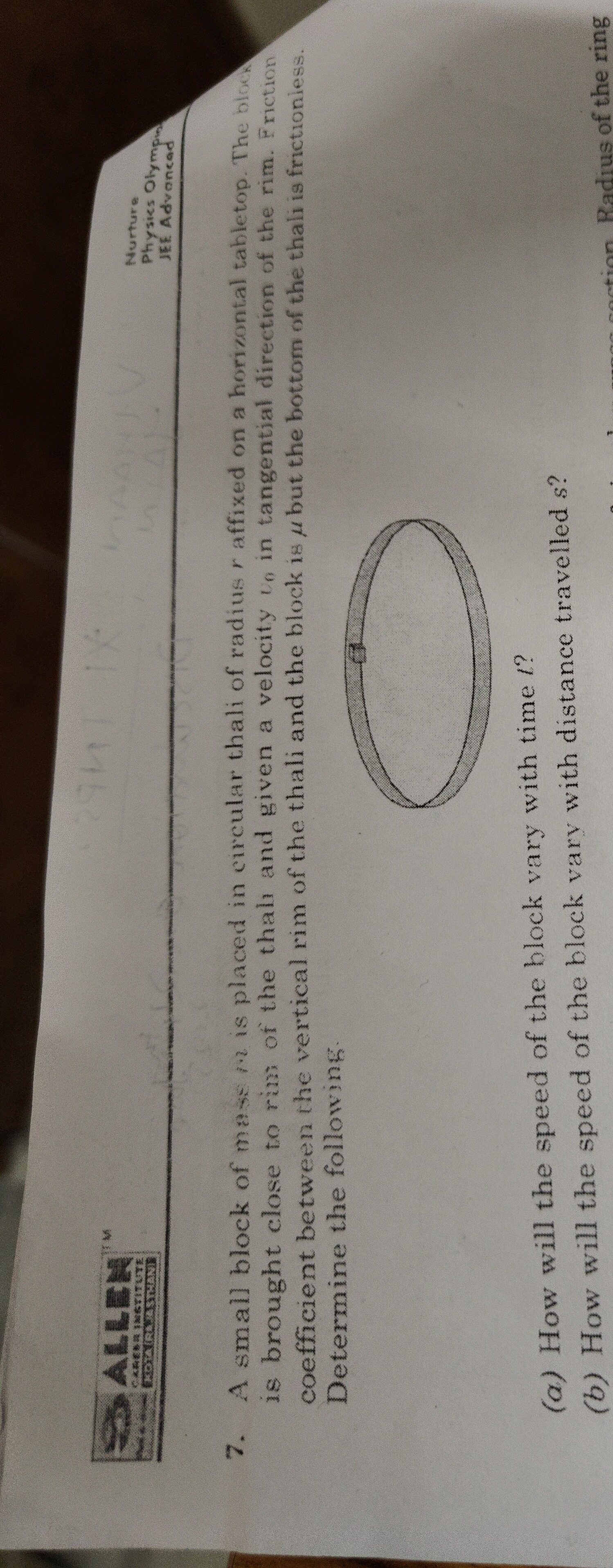Question
Question: A small block of mass *m* is placed in circular thali of radius *r* affixed on a horizontal tabletop...
A small block of mass m is placed in circular thali of radius r affixed on a horizontal tabletop. The block is brought close to rim of the thali and given a velocity v0 in tangential direction of the rim. Friction coefficient between the vertical rim of the thali and the block is μ but the bottom of the thali is frictionless. Determine the following.
(a) How will the speed of the block vary with time t?
(b) How will the speed of the block vary with distance travelled s?

(a) v(t)=r+μtv0rv0
(b) v(s)=v0e−rμs
Solution
The block experiences a normal force from the rim, which provides the centripetal force (N=mv2/r). This normal force results in a kinetic friction force (fk=μN) acting tangentially, opposing the motion. This friction force causes the block to decelerate.
(a) By applying Newton's second law in the tangential direction (mdtdv=−fk) and substituting fk=μ(mv2/r), we get a differential equation dtdv=−rμv2. Integrating this equation with initial condition v(0)=v0 yields v(t)=r+μtv0rv0.
(b) Similarly, using the tangential acceleration as vdsdv in the equation of motion (mvdsdv=−fk), we obtain dsdv=−rμv. Integrating this equation with initial condition v(0)=v0 gives v(s)=v0e−rμs.
